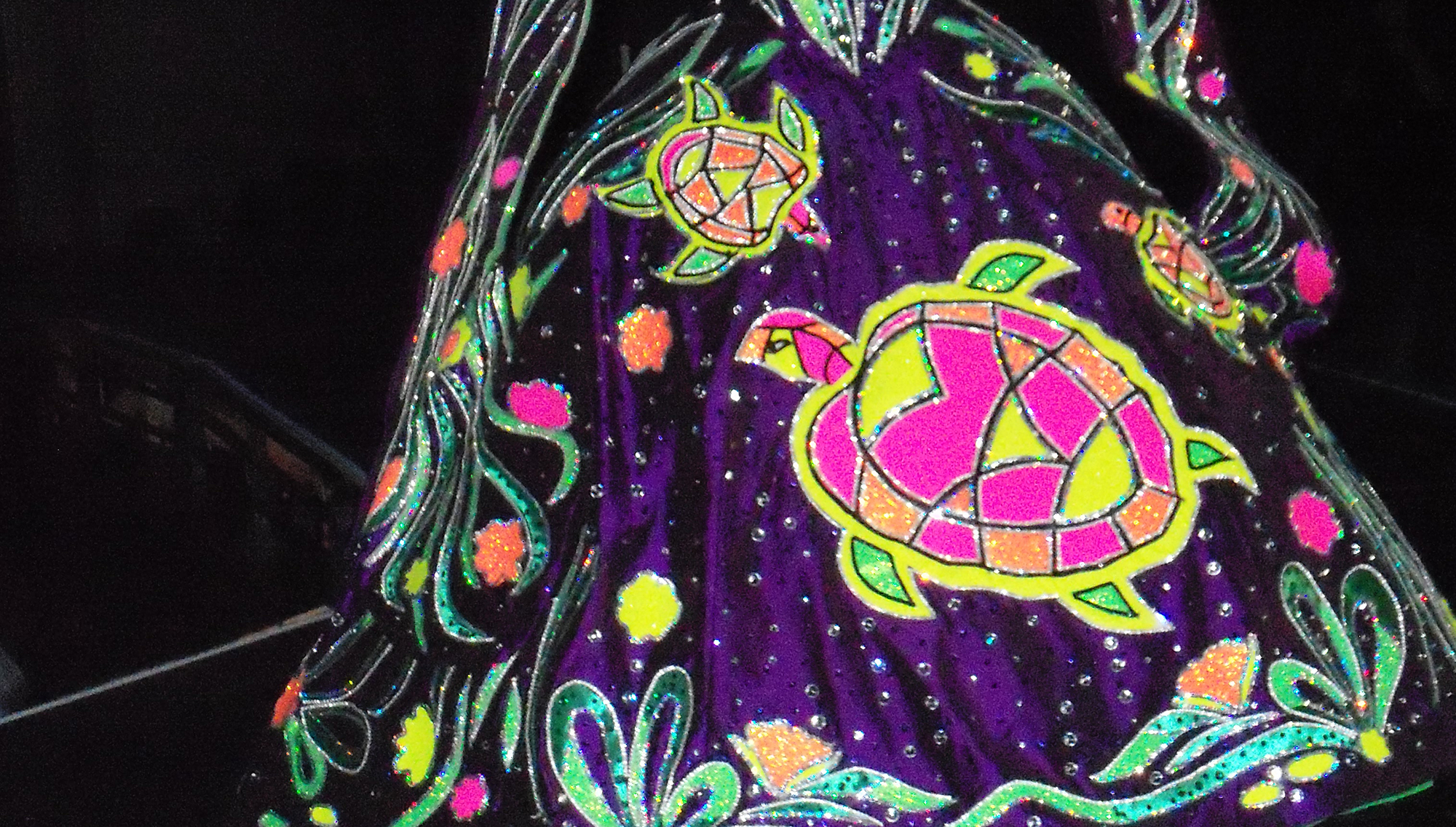A Little About Headpieces
Hats are wonderful! They put the finishing touch on a costume. They bring it all together for a fun, theatrical look! They are fun to wear, because, let’s face it, we don’t wear enough hats.
I love making headpieces. Each one is like a little – or not so little – sculpture. The headpieces which are designed for the Texas Rose Festival help to complete the theme of the overall costume. Often, people ask me, “What do you make your hats out of?” Since they are obviously made of fabric, feathers, sequins, etc, I think they are really wondering, “What supports all that stuff up there in the air?” So I will try to outline how I make a headpiece.
Once I have the head measurements of the client, I “pull a buckram head form.” Buckram is a stiff canvas type of fabric that has been impregnated with glue. When you get it wet, reshape it, and let it dry, it dries stiff, in the new shape.
I have head forms in various sizes to use for “pulling the buckram.” I will cover the head form in plastic, such as a grocery bag, (so the buckram does not adhere directly to the head form,) cut a circle of buckram large enough to cover the crown of the head, and moisten the buckram in the sink, or with a sprayer of water. Then I place the buckram on the head form, (like a cap) pulling on the bias, and pinning as I go, smoothing out the wrinkles. A strong rubber band can also be used. Once the buckram has taken the shape of the head, you let it dry overnight, or put a fan on it, to dry more quickly.
Once the buckram has dried, remove it, the pins or rubber band, and the plastic from the head form, then pull the plastic out of the buckram cap. You will not need the plastic again. I place the buckram cap back onto the form, and mark the center line, from front to back, and mark a line around the crown of the head, where the buckram is to be cut off. This line will be determined by the design of the hat. Cut off the excess buckram, on your line around the crown.
At this point, I shape millinery wire (usually 21 gauge) to sew onto the edge of the cap. I sew it onto the edge, overlapping the ends one to two inches, with the zig zag stitch on my industrial sewing machine. I sew wire across the top of the cap (ear to ear) and front to back also. These wires should not end at the outer circumference of the cap, but have a bend in them, to join and overlap the wire which edges the cap. Depending on the embellishments which will be on the finished headpiece, I may sew more than two wires to the top of the buckram cap. Then it is time to cover the wire around the crown of the head with a folded strip of bias-cut fabric. This can be done by hand or sewing machine. This protects the wearer from the wire and gives you a little padding for sewing combs or horsehair in later.
The next steps will be determined by the finished design of the headpiece. For example, if the headpiece needs to have something tall like a “fountain” of wires to be covered in fabric, curved like a fountain, and hung with pearl or crystal drops, you would use heavier wire than the wire used on the buckram cap, cut them to size, and cover in bias-covered cotton cording, leaving uncovered wire ends (base of fountain) to sew to the buckram. I make my ends long enough to curve down the cap and bend and join onto the wire that goes around the crown of the head. Then you would cover the cap with your fabric of choice, put a lining in the hat, sew in combs or horsehair tabs for pinning into hair, and decorate your fountain.
Even if the headpiece will be finished to look like a top hat, or some other traditional hat style, I still make the wired buckram cap, then construct the hat, and hand sew the hat to the cap. This allows you to tilt the top hat at a jaunty angle, if you wish, while the cap is symmetrical on the head, for a secure attachment to the hair. Part of the cap may show under one side of the top hat, but you can just decorate it, and all is well.
So, the short answer to the question, “What do you make your hats out of?” is, “buckram and wire.” The rest is embellishment, and there is no limit to the extent of that!
